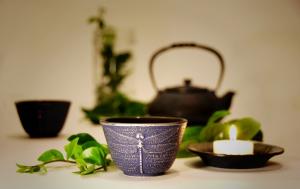Fusion draws on Japanese traditions
15 Apr 2013
-
EFDA
Assistant Professor Takumi Chikada's studies show that a layer of erbium oxide only tens of microns thick on a steel surface could reduce permeation of tritium by 100 000 times.© Rob-Keller from flickr.com
The Japanese people have a long history of creating ceramics of great beauty and elegance. Now they are putting their skills towards the search for materials for future fusion plants — in this case not crafting elegant forms, but elegant solutions: ceramics are nearly impervious to tritium.
In a colloquium delivered at JET last week, Assistant Professor Takumi Chikada from the University of Tokyo outlined promising progress in research into the ceramic coating, erbium oxide, which may prove to be a vital coating for use in tritium-carrying pipework. "Without solving this problem it will be impossible to operate a fusion reactor," he stated.
Because of its very small size, tritium tends to permeate through materials readily — an undesirable characteristic in a tritium processing plant, where tritium would be exposed to a large surface area as it passes through cooling, ducting and processing pipework.
Assistant Professor Chikada's results showed that a layer of erbium oxide only tens of microns thick on a steel surface could reduce permeation of tritium by 100 000 times.
Erbium oxide was originally chosen as an insulation coating because it has a high thermodynamic stability and is resistant to liquid lithium-lead — a proposed blanket material for fusion plants, which is corrosive to many materials.
Read more on the EFDA website.


